There are two sides to the coin on this topic.
For some time now, industry pundits have maintained that cloud-based ERP will eventually rule, and on-premises software is destined for legacy status. This is a big change from just a few years ago, when cloud ERP was met with outright scepticism, particularly among large companies with big investments in on-premises systems.
“The original advantages of cloud ERP were faster deployments, immediate enterprise-wide availability of the latest versions of applications, less need for on-site support and simpler pricing,” CIO’s Michael Nadaeu writes. “Later systems featured greater ease of use, mobile-enablement of applications and easier integration with outside data sources. Today, the most up-to-date cloud-based ERP systems have Internet of things (IoT) and machine learning capabilities.”
With cloud-based ERP offering so many pluses, why even consider an on-premises option?
Cloud is an excellent solution for many types of workloads but cloud cost optimization is an ongoing battle for many businesses. And one easy way to end up paying more than you should is to run workloads that have a high amount of data ingress (the process of moving data into the cloud) and
egress (the process of moving data out of the cloud). The reason is that most public cloud providers charge a fee every time you move data out of the cloud. Some also charge for ingress into the cloud, although that is increasingly less common.
So, even though you may pay only pennies per gigabyte each month for the data you have sitting in the cloud, your bill will climb much higher if you constantly move data in and out of the cloud. Workloads that require a lot of data transfer of this type–such as applications that sync data between a cloud environment and a local one–may not be ideal candidates for the cloud from a cost perspective.
The fact that the cloud depends on network connections to move data between cloud servers and the people who create or use the data not only introduces latency challenges, but it can also make it impractical to transfer large volumes of data into and out of the cloud at reasonable speeds.
As a result, workloads that rely on or generate large volumes of data may not perform acceptably in the cloud. “Large volumes” is a relative term, of course, and the amount of data transfer that your cloud can handle depends largely on your network bandwidth. But an application that has to move a hundred gigabytes or more of data into or out of the cloud each day may not perform well due to network limitations.
Total Cost of Ownership
Cloud ERP
- Usually based on a subscription pricing model
- Includes all hosting, server, maintenance and software updates
- Implementation and training services are charged as an additional fee
- Typically listed as an operating expense
- Can be as much as 46% less compared with on-premise
Cloud ERP requires integration with the system, but otherwise, it is ready for use in less time than its on-premise counterpart. There is a subscription fee for the service with various hardware-software costs, and additional features included. Nevertheless, it is significantly less than the infrastructural costs of on-premise ERP. However, the costs may balloon as the system grows and evolves.
On-premise ERP
- Often charged as a one-off license fee
- You’re responsible for hosting, maintenance, software updates, and all general running costs
- Implementation and training services are charged as an additional fee
- Typically listed as a capital expense
On-premise ERP requires a significant upfront investment to set up the infrastructure and handle the deployment of the system. In addition to this, you need to train staff to operate and maintain the system.











